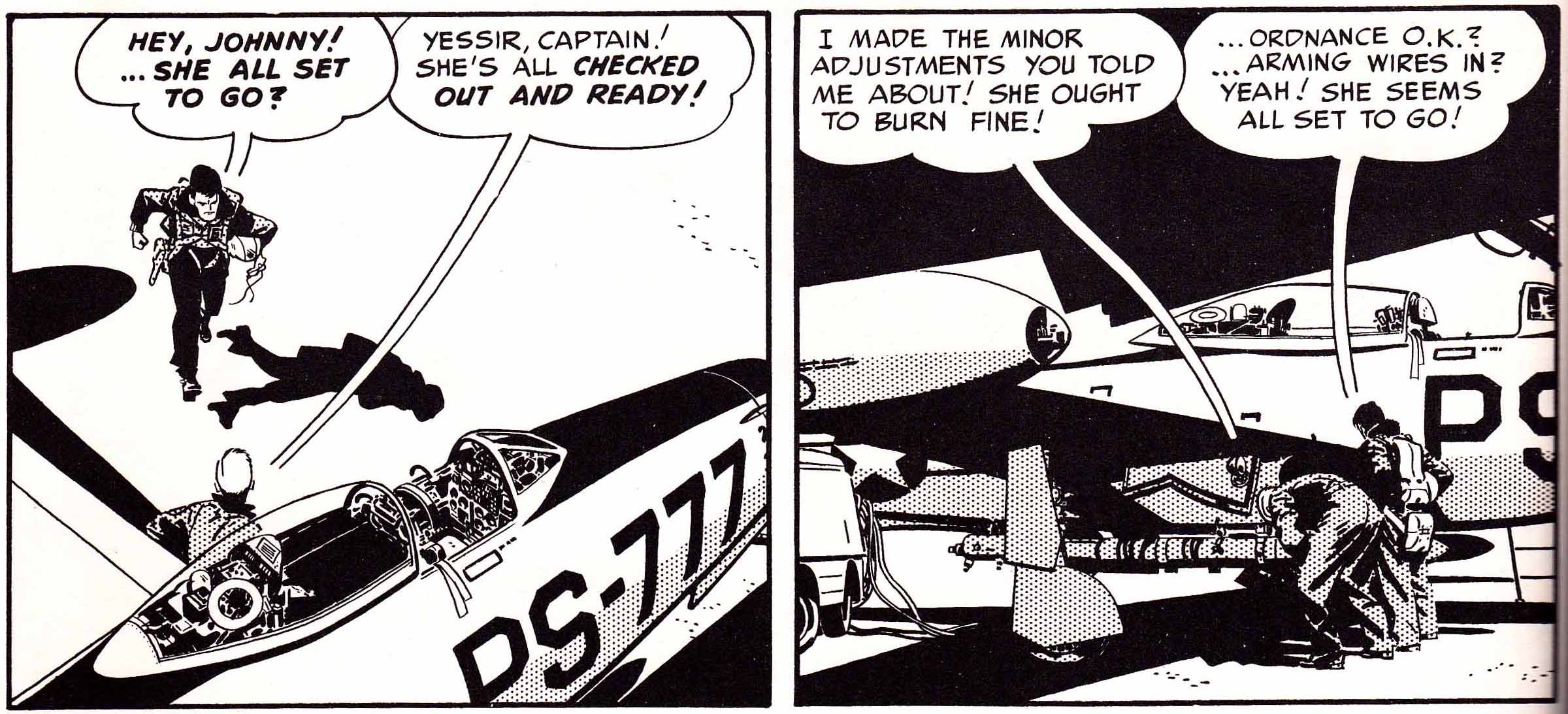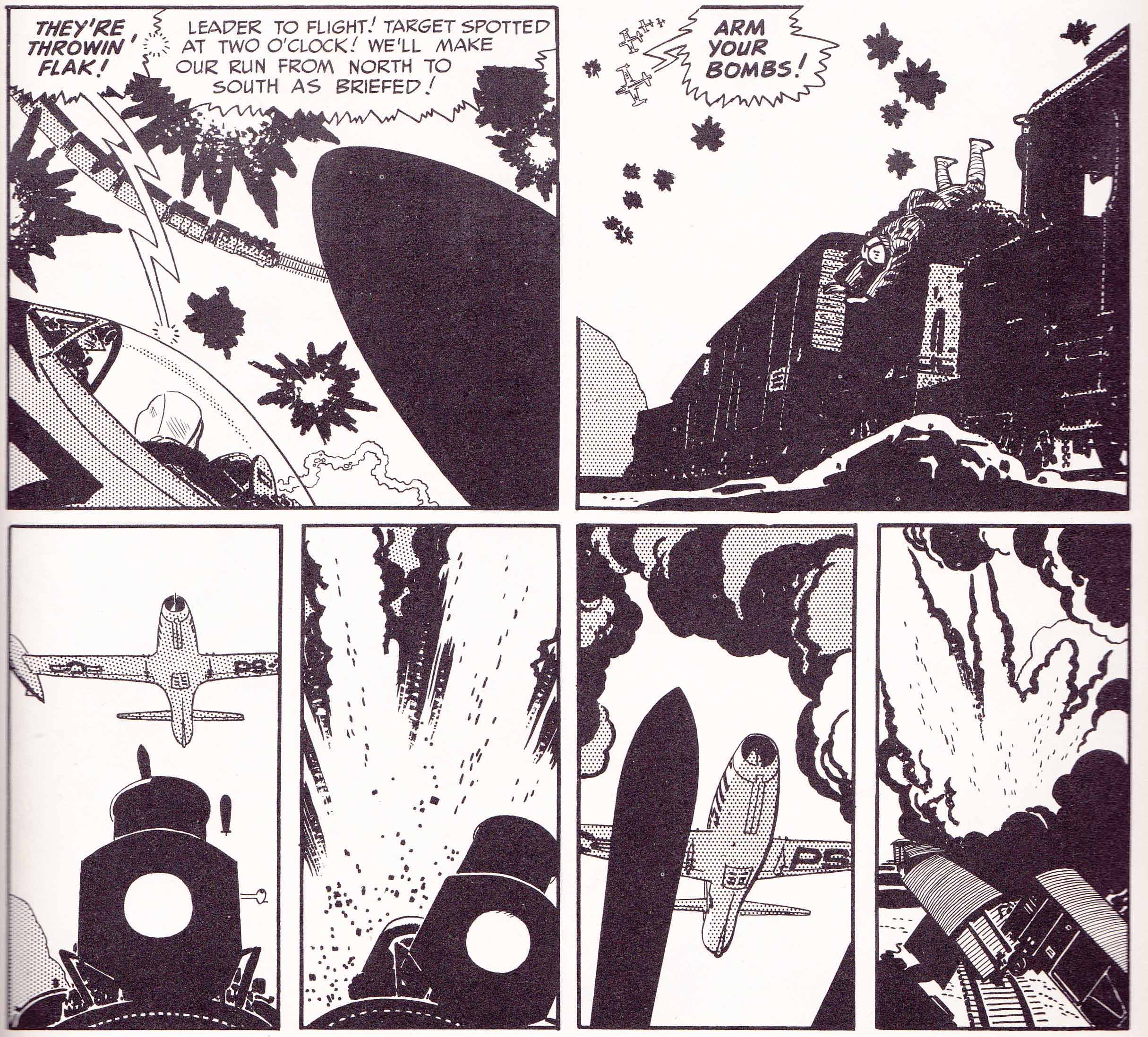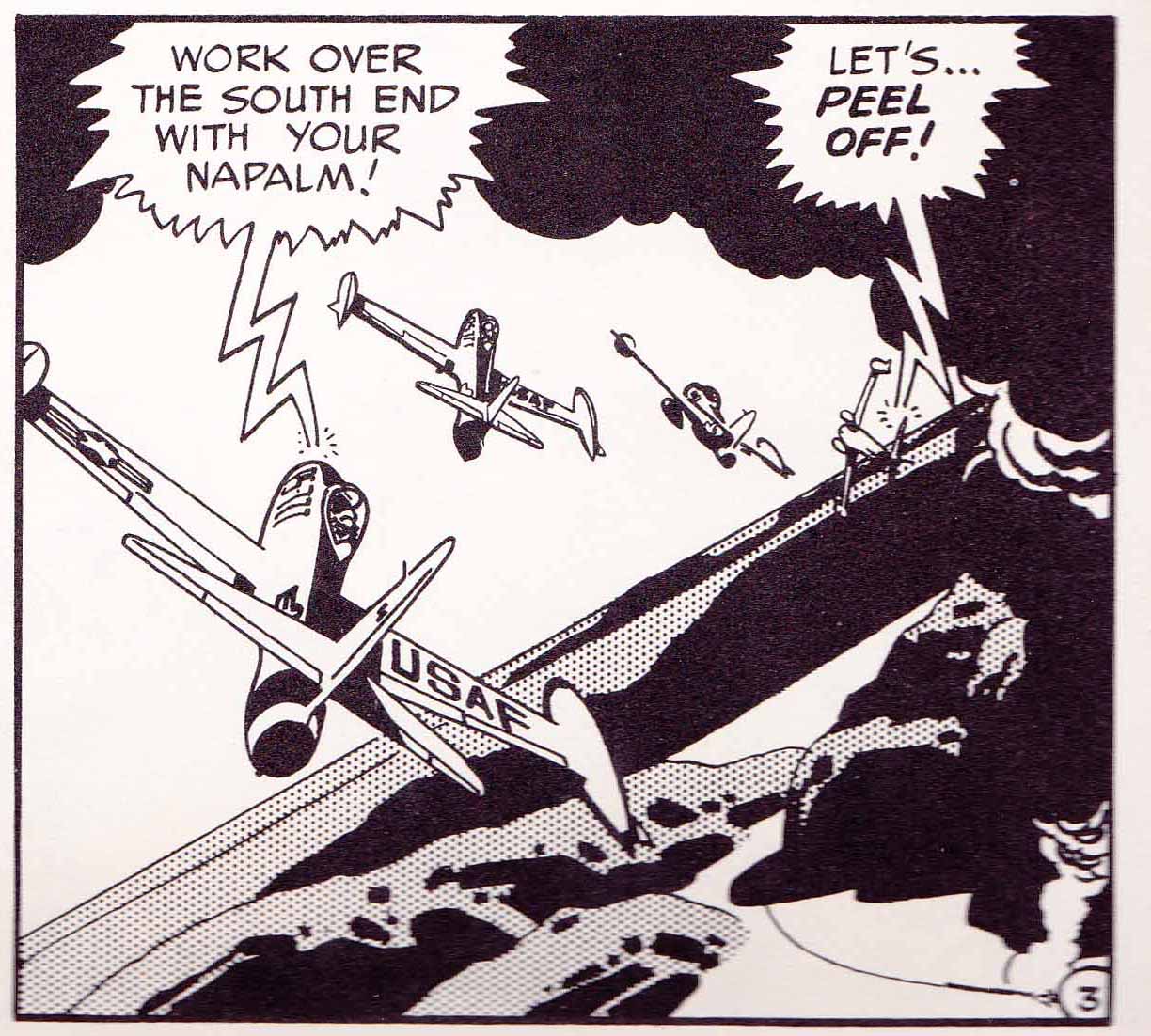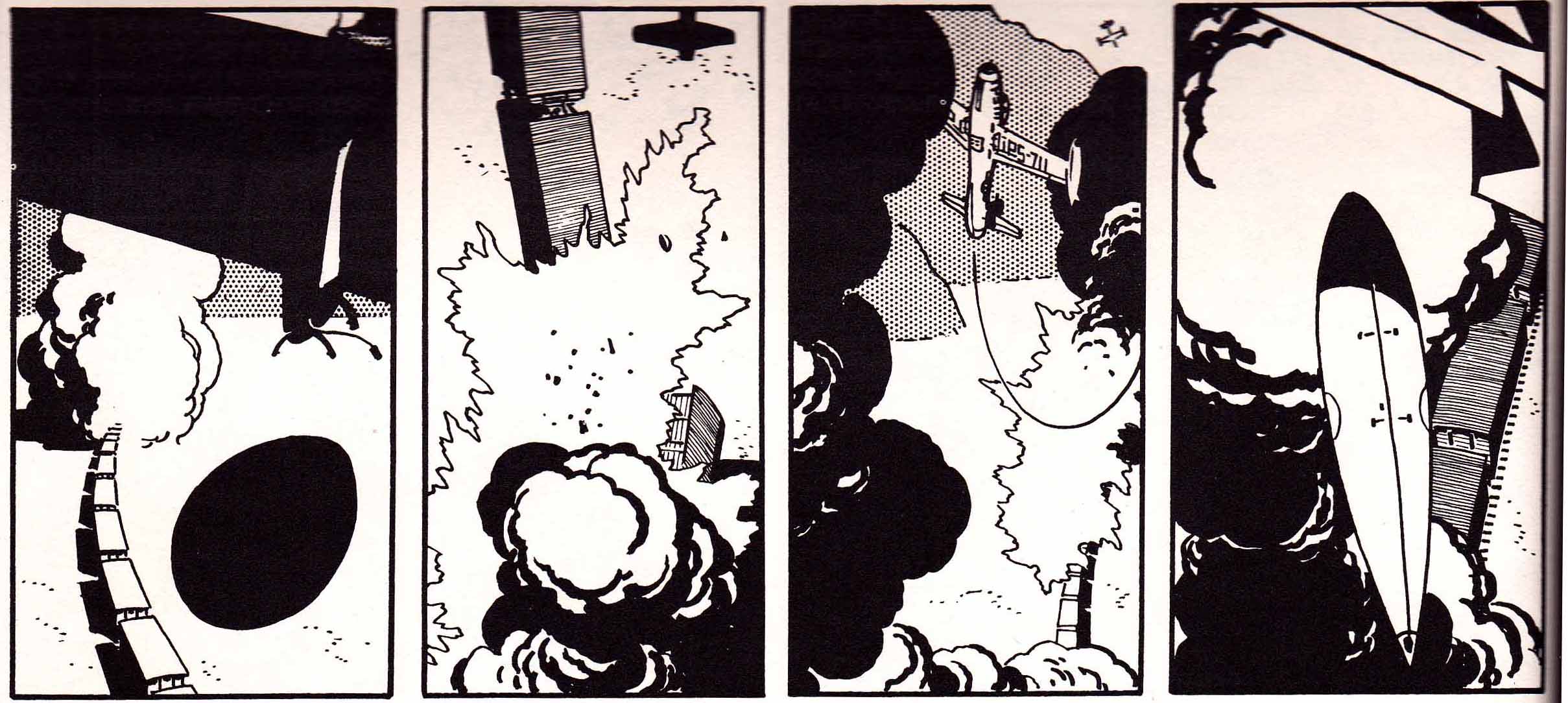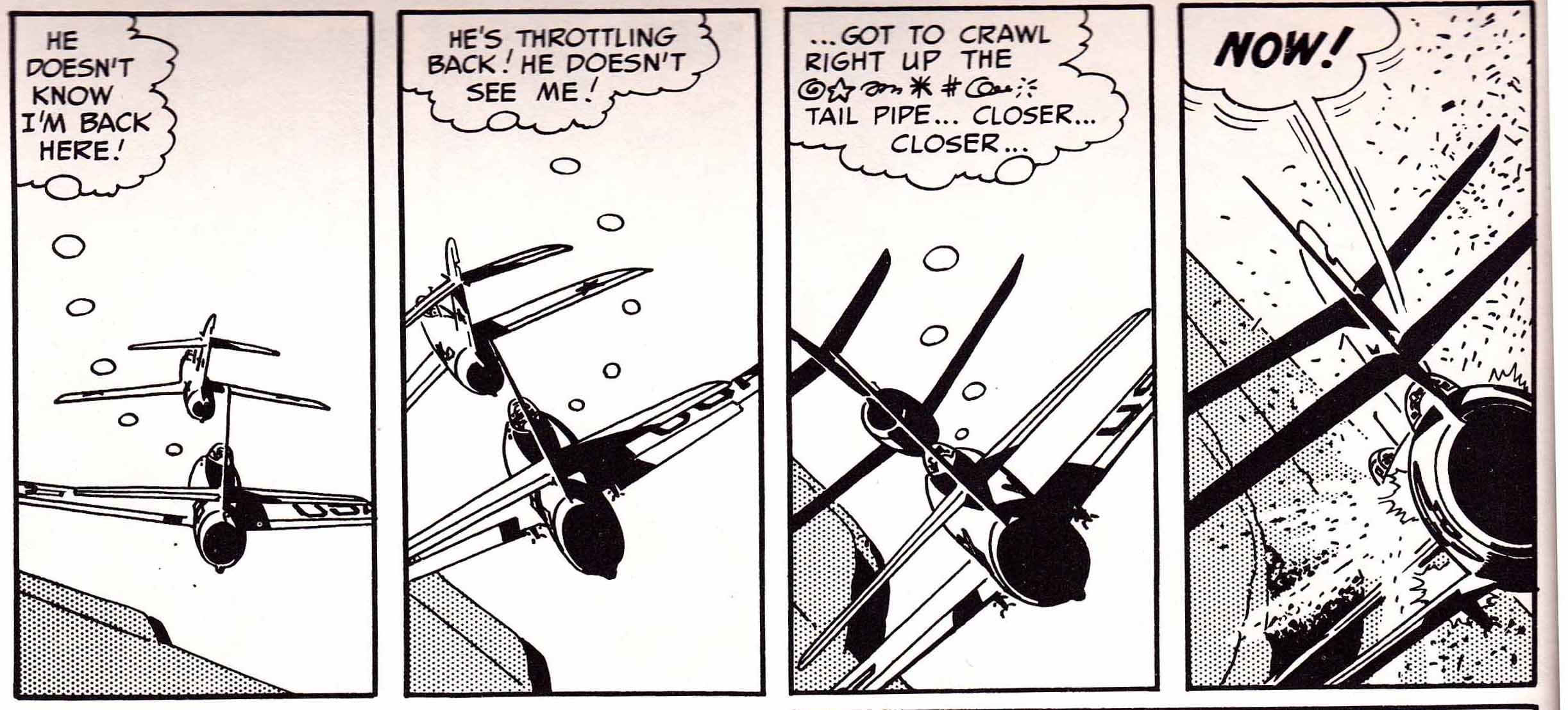All text from The Korean War: A History (2010) by Bruce Cumings
Scans taken from Frontline Combat #8 by Harvey Kurtzman and Alex Toth. A story based on fact….
______________
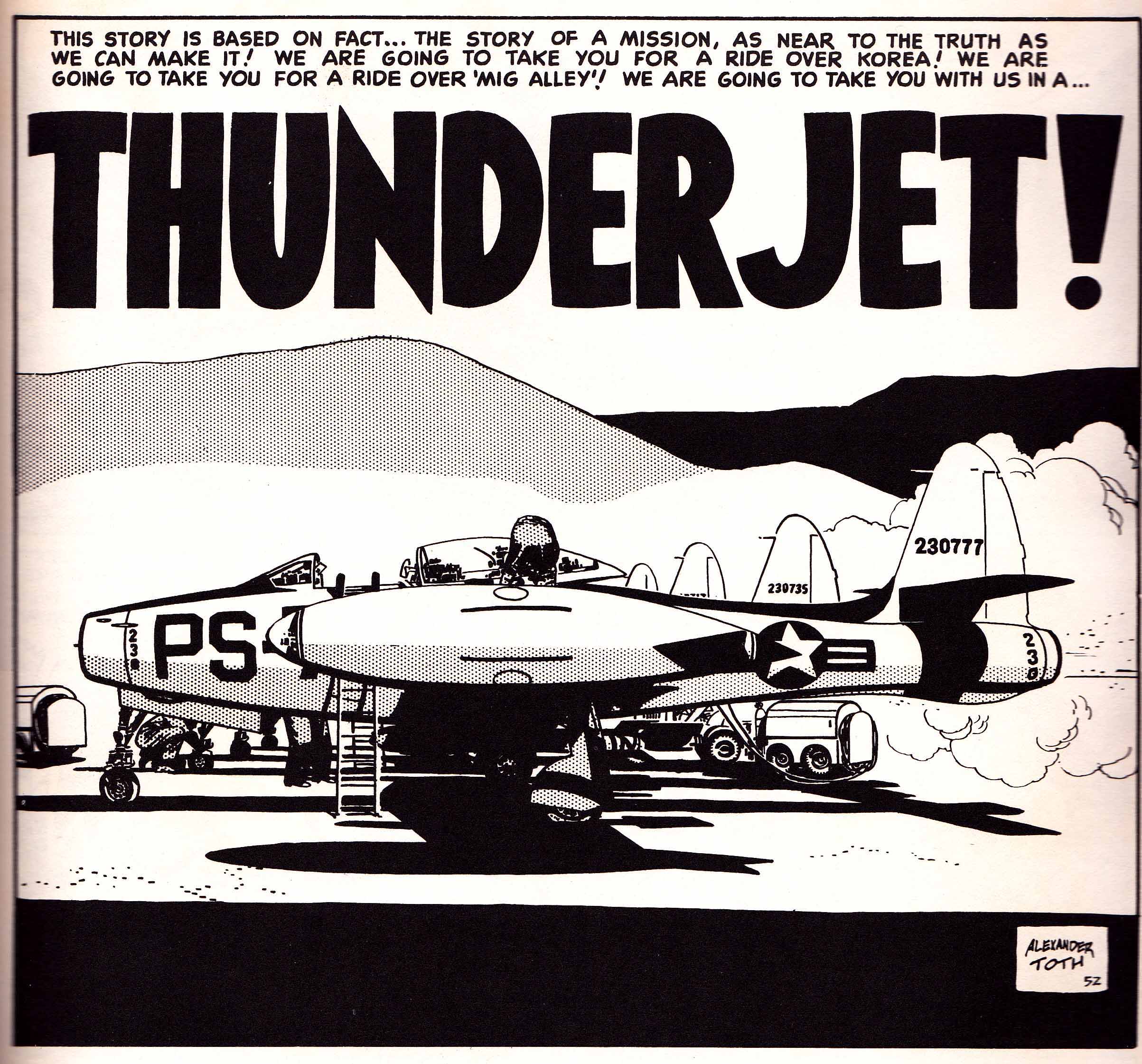
Curtis Le May …said that he had wanted to burn down North Korea’s big cities at the inception of the war, but the Pentagon refused—“it’s too horrible.” So over a period of three years, he went on, “We burned down every [sic] town in North Korea and South Korea too, …Now, over a period of three years this is palatable, but to kill a few people to stop this from happening—a lot of people can’t stomach it.”
General Ridgeway, who at times deplored the free-fire zones he saw, nonetheless wanted bigger and better napalm bombs…in early 1951, thus to “wipe out all life in tactical locality and save the lives of our soldiers.”
The Pujon river dam was designed to hold 670 million cubic meters of water, and had a pressure gradient of 999 meters…According to the official U.S.Air Force history, when fifty-nine F-84 Thunderjets breached the high containing wall of Toksan on May 13 1953, the onrushing flood destroyed six miles of railway, five bridges, two miles of highway, and five square miles of rice paddies…After the war, it took 200,000 man-days of labor to reconstruct the reservoir.
One day Pfc. James Ransome, Jr.’s unit suffered a “friendly” hit of this wonder weapon: his men rolled in the snow in agony and begged him to shoot them, as their skin burned to a crisp and peeled back “like fried potato chips.”
…Operation Hudson Harbor…part of a large project involving “overt exploitation in Korea by the Department of Defense and covert exploitation by the Central Intelligence Agency of the possible use of novel weapons.” This project sought to establish the capability to use atomic weapons on the battlefield…lone B-29 bombers were lifted from Okinawa…and sent over North Korea on simulated atomic bombing runs, dropping “dummy” A-bombs or heavy TNT bombs.
After his release from North Korean custody Gen. William F. Dean wrote that “the town of Huichon amazed me. The city I’d seen before-two storied buildings, a prominent main street-wasn’t there any more.” He encountered the “unoccupied shells” of town after town, and villages where rubble or or “snowy open space” were all that remained.
Meray had arrived in August 1951 and witnessed “a complete devastation between the Yalu River and the capital,” Pyongyang. There were simply “no more cities in North Korea.”…A British reporter found communities where nothing was left but “a low, wide mound of violet ashes.”
…at least 50 percent of eighteen out of the North’s twenty-two major cities were obliterated.
…the pilots came back to their ships stinking of vomit twisted from their vitals by the shock of what they had to do.

